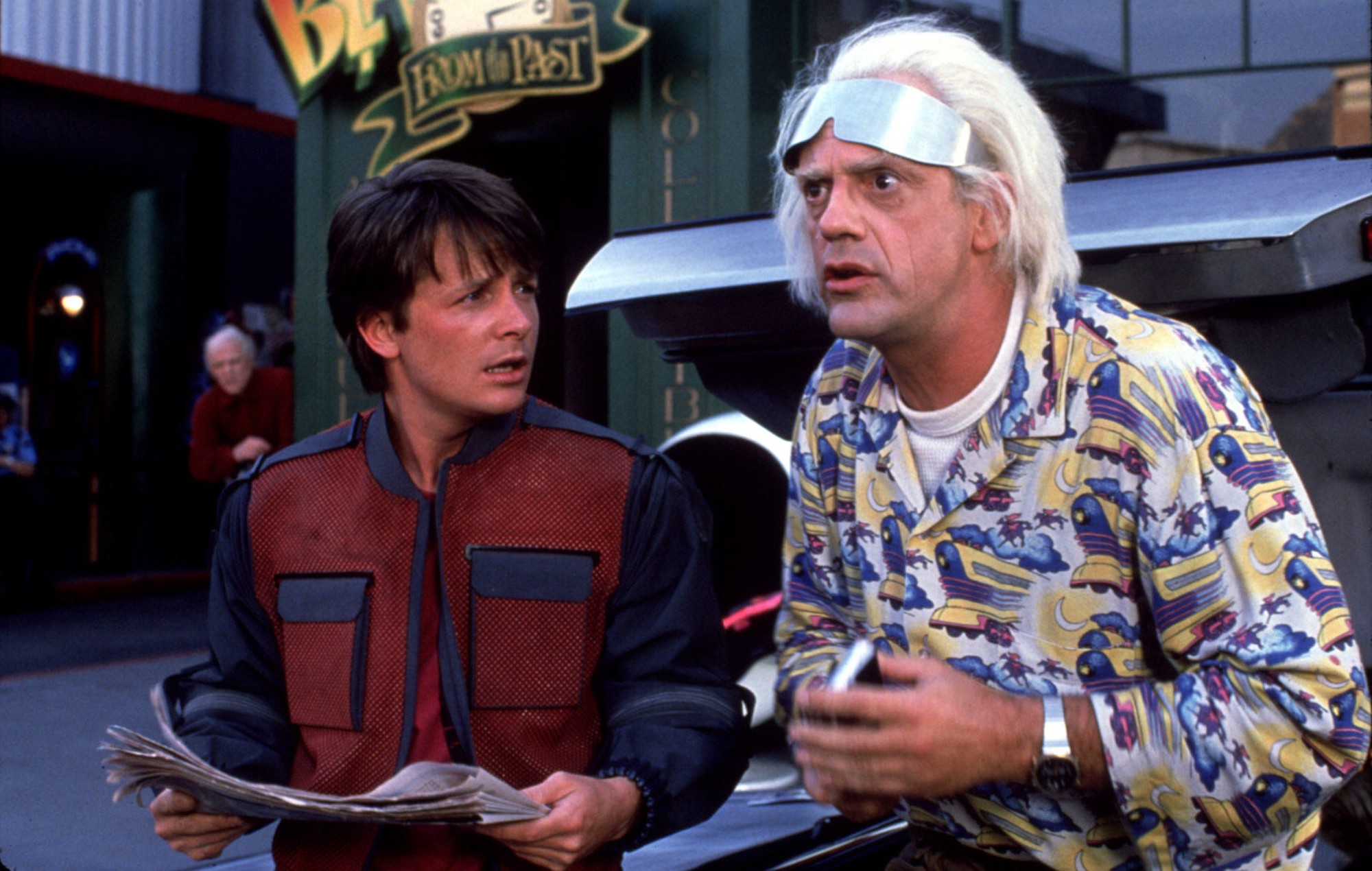Table of Contents Show
Back to the Future is one of those films that got lodged firmly in American pop culture and has remained a key addition to the 80s film universe ever since. Even though the first movie came out over thirty years ago now, it still has a cult-like following, with people celebrating “Back to the Future day” every year on October 21st, the day that Marty travels to the future to save his kid in the sequel, Back to the Future II.
From the iconic lines, characterizations, costuming, and plot, Back To The Future was just one of those films that revolutionized the genre and brought sci-fi to the forefront of cinema. It is also one of those movies that current nostalgic 80s television and cinema try to emulate in terms of aesthetic and character-driven plot, like the prevalent Stranger Things. Let’s look back at the film and what exactly makes it so special and — as most old movies tend to be in one way or another — problematic.
Fashion In Back To The Future (1985)
Something that stands out about the film is the fashion. Marty McFly has impeccable taste. Throughout the movie, Marty has a consistent style; whether he is in the 80s or the 50s, his wardrobe always feels contemporary and comfortable. Marty’s infamous puffy red vest and dad jeans are just one trend that has sustained to this day, and that was exemplified by the young fashionista. His simple, comfortable, and colorful pieces do a lot of the work in terms of characterizing the character.

Without a line of exposition, the film is able to show Marty is a laid-back kind of guy who is still aware of himself through clothing choices. He dons a pair of Nike Killshots that were incredibly popular at the time, as well as classic aviators to round off his outfit. Timeless, popular, but still uniquely Marty. Additionally, Marty’s outfits are used to differentiate him from the other people of the 50s, and his uniqueness for the time is a big reason why so many people gravitate toward him. His seemingly “plain” 80s garb is transformed into stylish future wear by virtue of time travel.
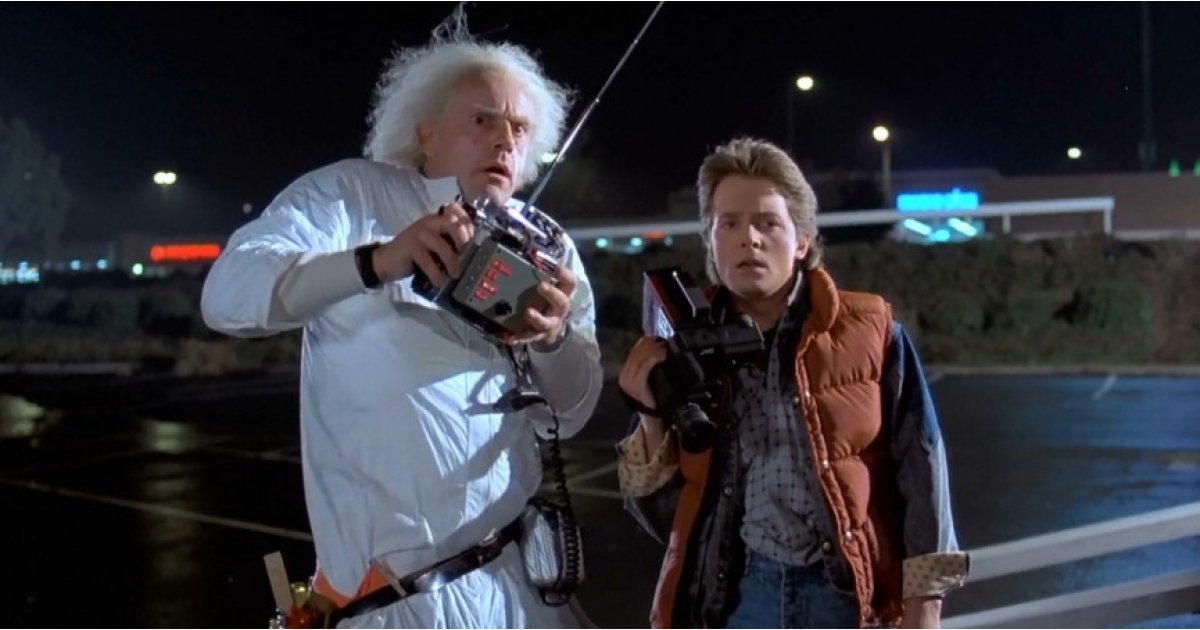
Doc primarily dons a classic white lab coat for the majority of the film, making it hard to discern his level of fashion awareness. That being said, in the second film, when Doc dresses up in what he believes the people of “the future” (2015) wear, he kind of nails it. Doc switches his white coat out for a yellow trench coat and his basic shirt for various colorful and patterned button-ups. That, plus silver wrap-around shades and a clear plastic tie, make his fit strangely current, with young people today favoring wacky prints and high fashion of 2021 turning towards large color block outfits and futuristic shades. (( Team, ELLE Fashion. “8 Fashion Trends That Will Be Big in 2021.” ELLE, 9 June 2021 )).
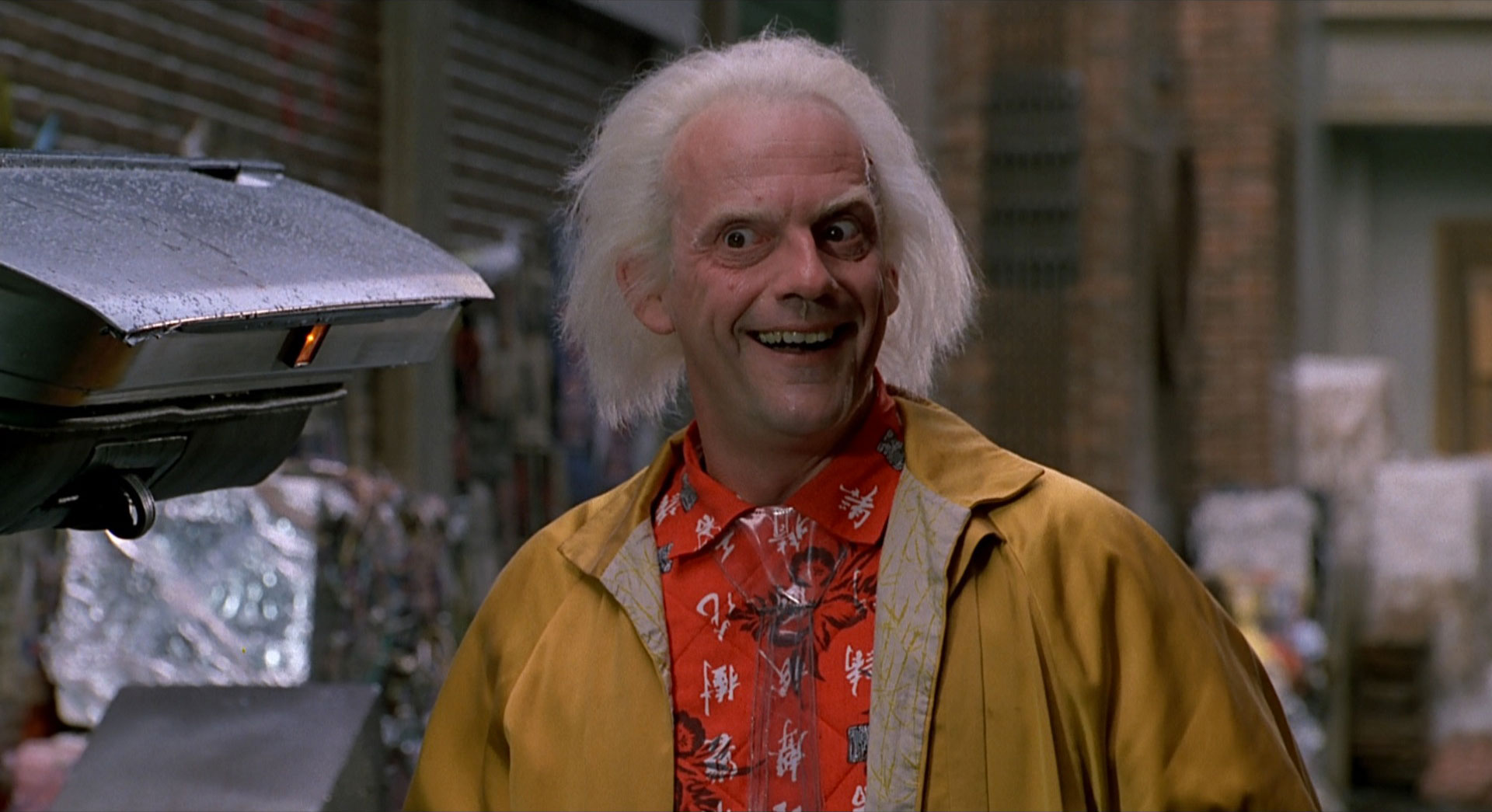
The recognizable style of the 80s and the film’s main protagonist makes the film feel extremely comfortable. Since every item is accessible and wearable (even today), Marty feels like just a “regular dude,” which successfully does two things for the film. One, it makes his shock, confusion, and subsequent panic after time traveling very convincing. And two, it makes the watcher of the film feel like they could be in Marty’s very worn-out Nike shoes. Seeing “normal” people doing extraordinary things always is a treat.
The Plot Of Back To The Future
The science of the film is…iffy, sure. But, the fact that this “science fiction” film isn’t so technical, or really about the mechanics of the scientific occurrences, makes it accessible for a wider audience. A lot of the mechanics of the film’s plot are pretty vague. If one would watch the film with a critical eye, they may come away from the plot with a few questions. Namely, who are the “terrorists” from the beginning who attempt to kill Doc and who force Marty into the car in the first place? Why would Marty’s actions in the past prevent his birth and not just create a new timeline? How exactly do the film creators think timelines work? Are there multiple universes? Or even just, how does the car work again? Lightening has something to do with it?
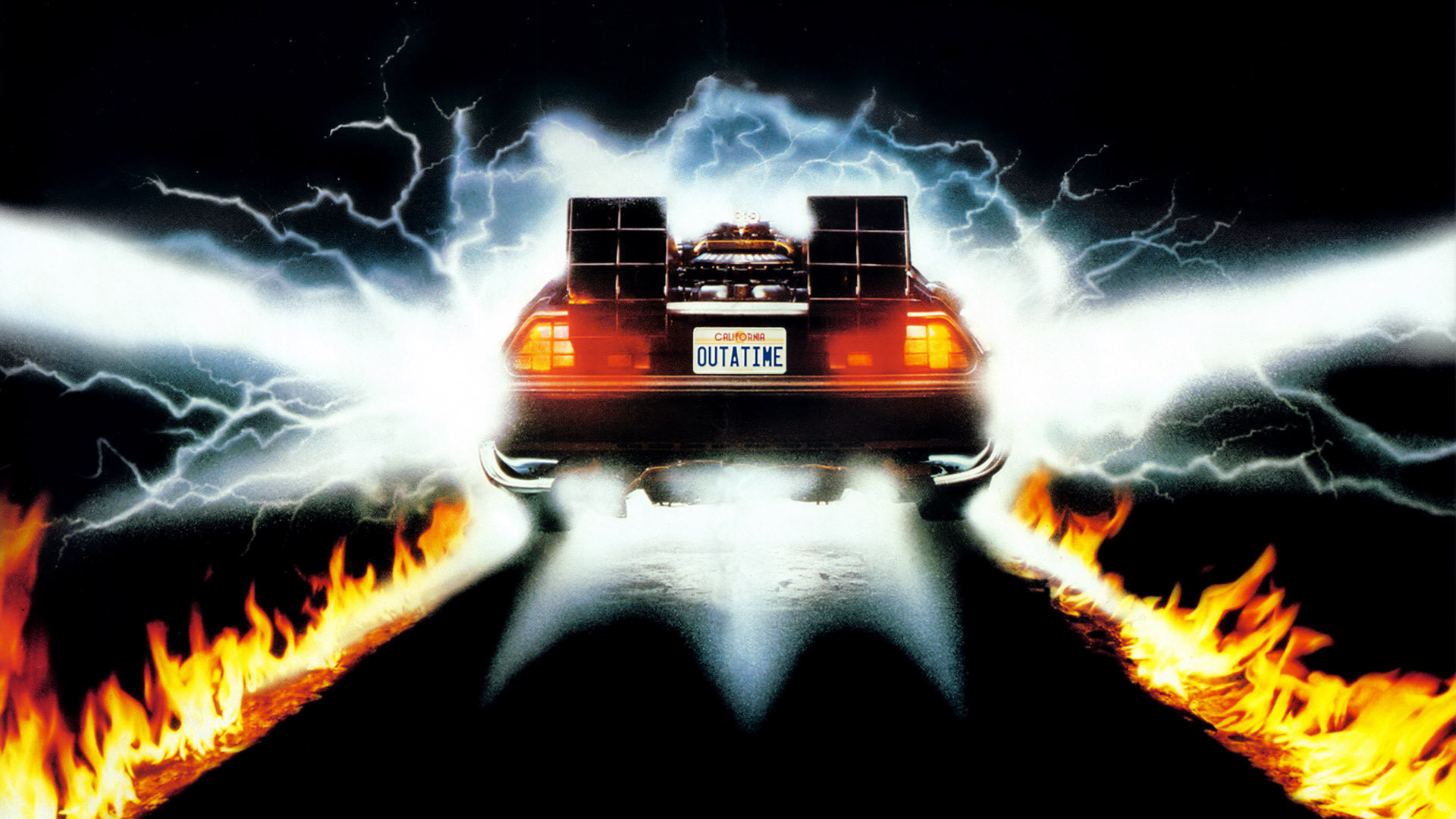
There are surely in-depth articles about the science behind the series, but that is beside the point. This is a science fiction film that is simple enough to be enjoyed by an average filmgoer. Yes, it would be interesting to hear about the theory behind it all, but it is just as interesting to watch the plot unfold, the character relationships, and Marty sing and play guitar.
Ethics
Although the film is primarily an adventure film with comedic tones, there is a hefty amount of ethical theory in the main plot. When Marty goes back in time, the past becomes his present, and his previous present becomes his future. This may seem a bit convoluted, but the point is that the film is implying that you control your future. The actions Marty makes in “the past” (his present) change his “present” (or the future); this is a very “free will” forward film — it insists that you have the power to change your future. Doc is a particularly ethics-concerned character in the film. When Marty first finds himself in the 50s, he immediately seeks out the younger Doc to see if he can help him get back. When Doc realizes what happened, he refuses to hear any details about the future, not wanting to compromise, in his eyes,
“what is supposed to happen.”
However, Marty knows Doc will be shot sometime in the future, so he slips him a note about it. This leads to the “future” Doc wearing a bulletproof vest on the day he is going to be shot, saving his life. Ultimately, the film seems to conclude that although meddling with time is not the best when done for selfish reasons (see Back to the Future II), it can’t be so bad when it is for love and friendship. There is a lot of opposing theory in regards to time travel and changing what happens in the timeline, that it is always bad to do (theoretically), but this film goes with a more positive take.
A Comforting Narrative
This is one of those films where the audience knows that everything will be alright, yet they are on the edge of their seat the whole time. There is something really comforting about watching a classic “hero’s journey” but in a new setting. Marty is worried about becoming complacent in life like his parents and doesn’t know what his future will hold. He has his call to adventure by the crazy Doc, but he ignores the call.
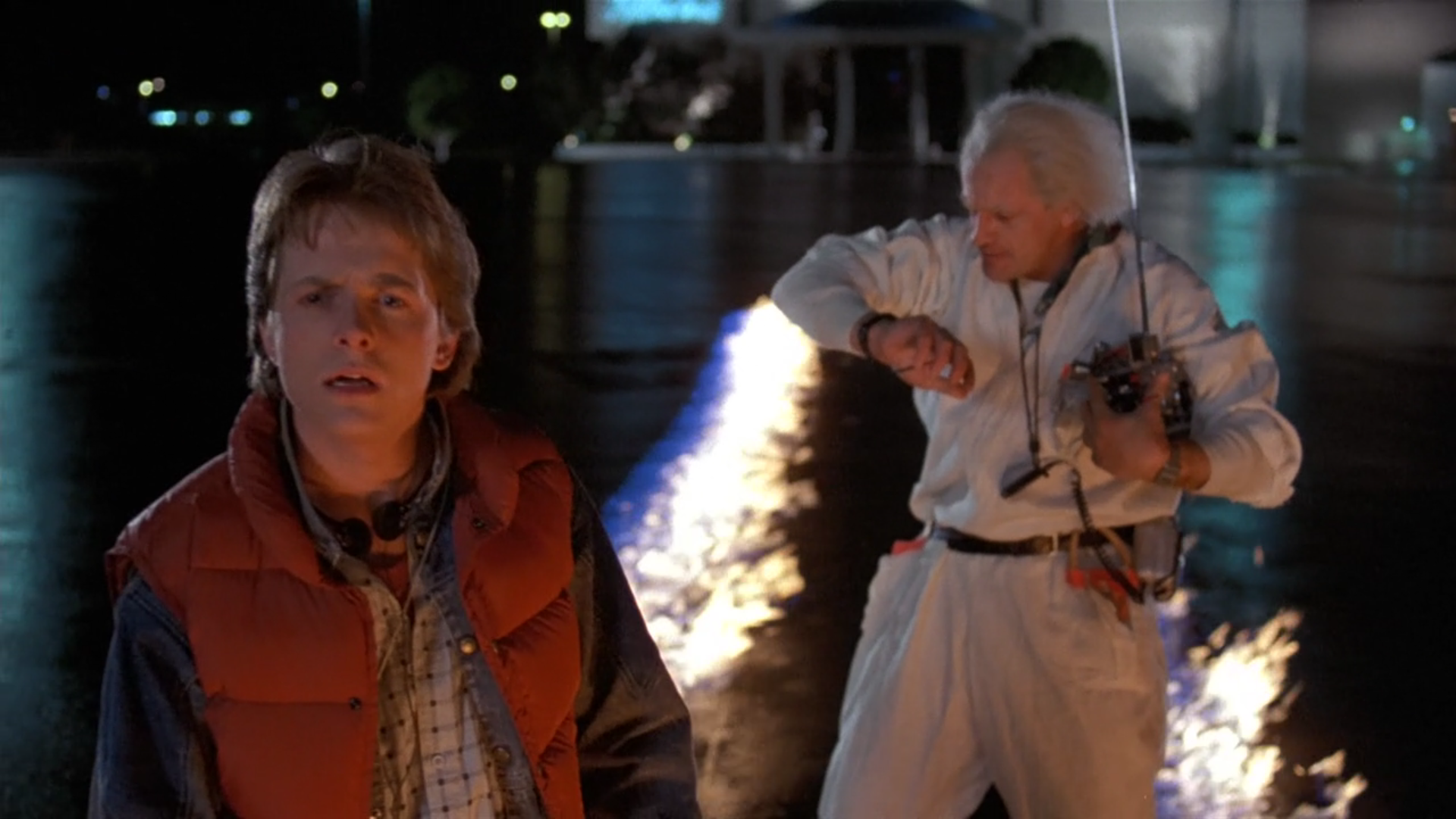
Then, when the terrorists come and force Marty into the car, he is literally forced to answer the call of adventure and leave behind everything he has known. After he is finally able to get back home, he returns, not only a changed man himself but having changed the trajectory of his parents’ lives too. Deceptively simple, and yet, that is what makes the story last.
The Women Of Back To The Future
Unfortunately, this film isn’t completely immune to Hollywood’s historically problematic relationship with women (and generally anyone who wasn’t a cishet white man). Although for the sake of an enjoyable watch, this can be written off as “of the time” since Marty does travel back to an era where women had even less agency over their lives (the 50s), it is still important to acknowledge and analyze. That being said, given what the time entailed, this film is able to do a lot with outdated character tropes and plots, so its relationship to women doesn’t totally cripple the watching experience.
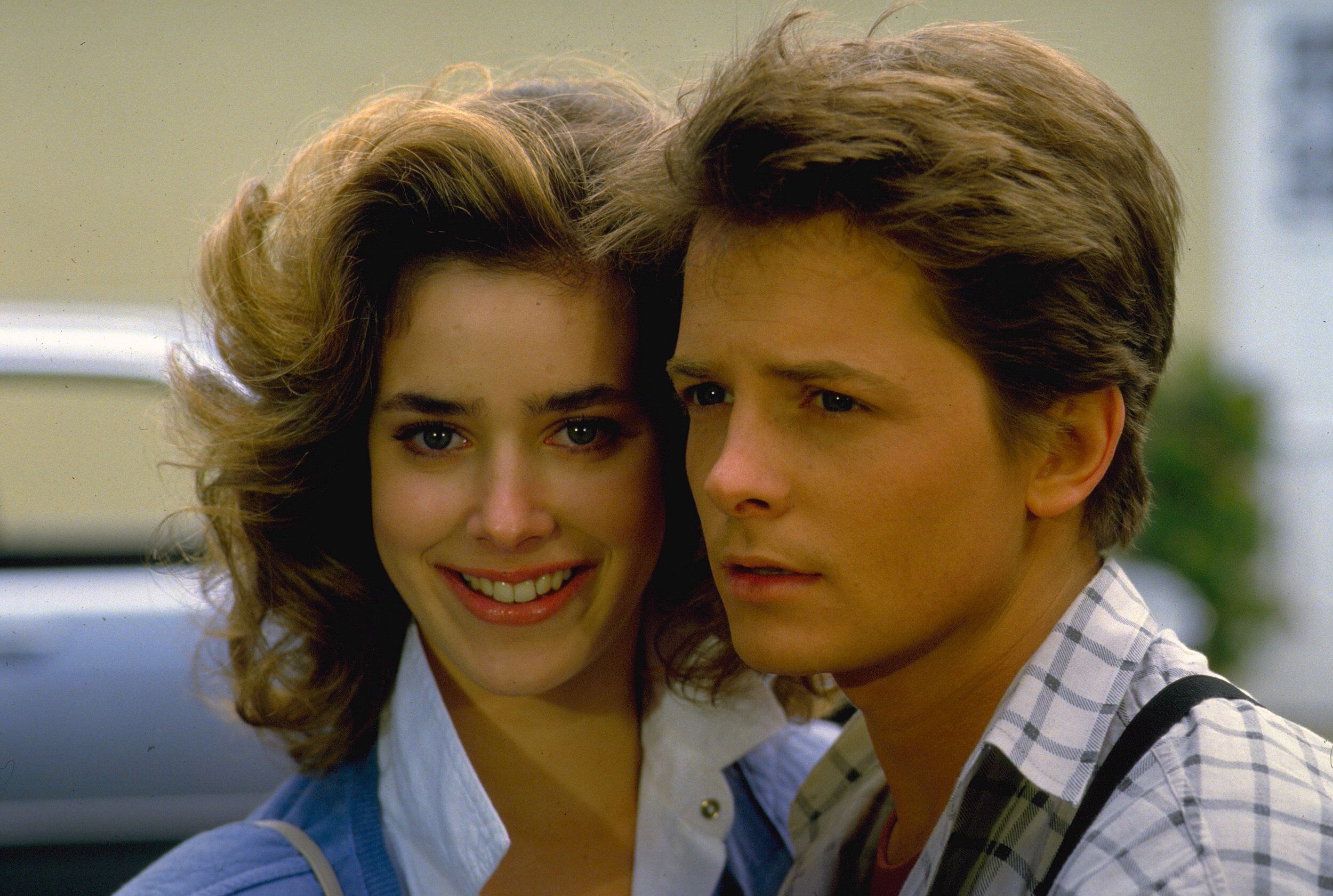
In the 80s (pre-time travel), the only real female given any significant screen time is Marty’s girlfriend, who is badass and secure and has killer style (originally played by Claudia Wells, later recast with Elizabeth Shue taking the role). Although she doesn’t play a huge role in the first film, she comes back for the second, and Marty’s faithfulness to her throughout the series is a small way that shows the respect the film has for women. That being said, this is a very male-centric movie, with most of the main characters being white men and most of the plot points surrounding their conflicts/resolutions.
Marty’s Mom
For the most part, even though Marty’s mother is the main catalyst for much of the mayhem of the plot, she is more of a side character in all of the hi-jinx. She also is the main point of controversy since she essentially tries to sleep with her son. In the process of unwittingly trying to seduce her literal son, she is silly and goofy. She is very forward and flirty, subverting the idea that women have to always be demure and silent about their desires. She is strong-willed and refuses the brute, Biff’s, advances. She may not be the most kick-ass woman in media, but she definitely steps up from the earlier female archetypes.
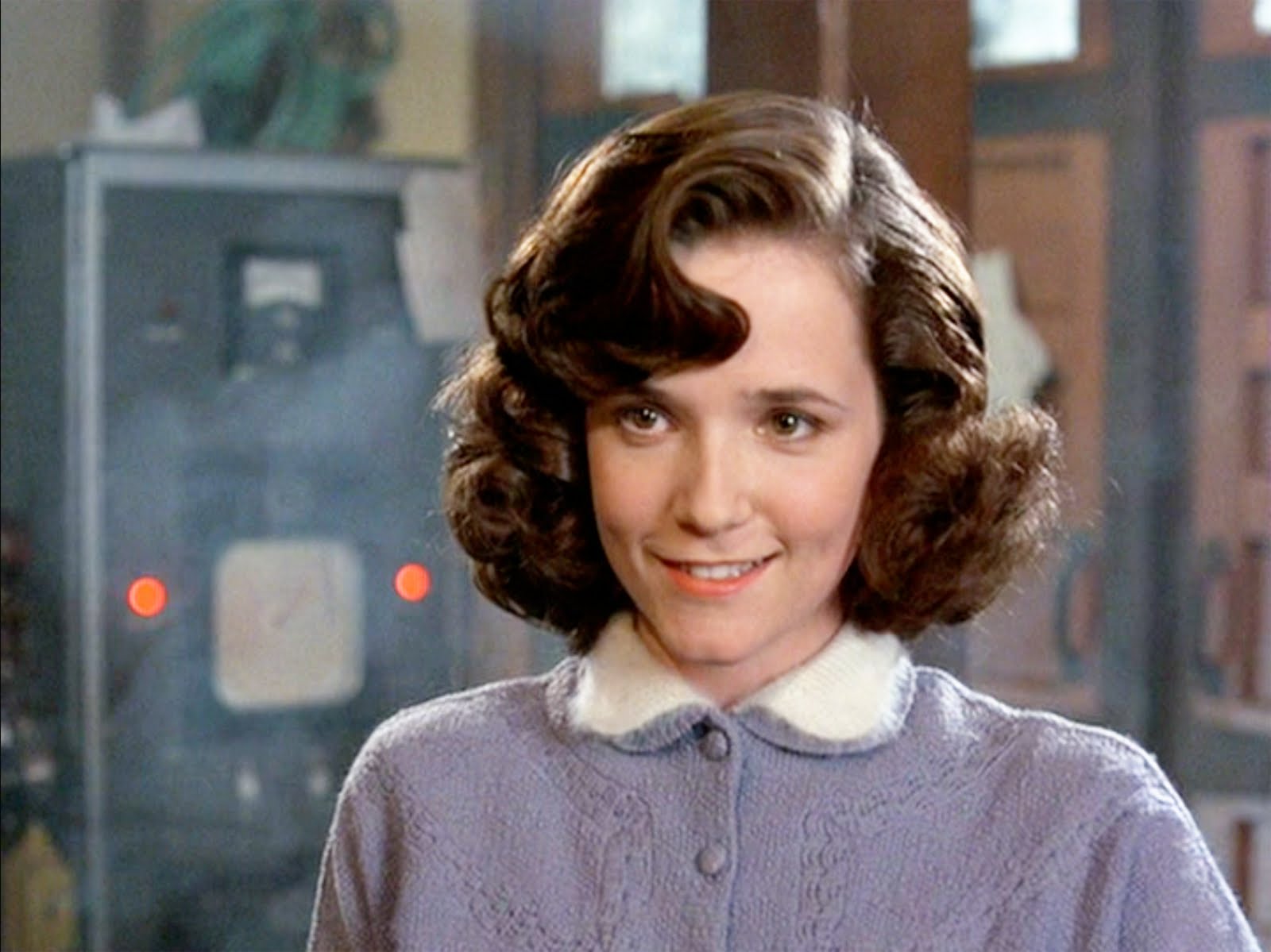
This all being said, she spends most of her time as the quintessential “damsel in distress.” She has to be saved from her own naivety, from Biff, from what she could be in the future. Although Marty’s changes in the past end up helping out his mother and her future self, it is a little off-putting the way the film makes it seem like she has no agency over her life, and all of her decisions are determined by her reactions to the actions of the men around her.
Marty & Women
Marty is a stand-up kind of guy; throughout the movie, he is mostly only concerned with the wellbeing of the women around him (especially his mother). Women tend to gravitate towards him and his goodness (especially his young mother, yikes). Since Marty is the protagonist of the film, it is safe to assume he reflects the values of the filmmakers when it comes to women. Although women are not at the forefront of any of the action, they are highly respected by a young Marty, which sets a great audience example.
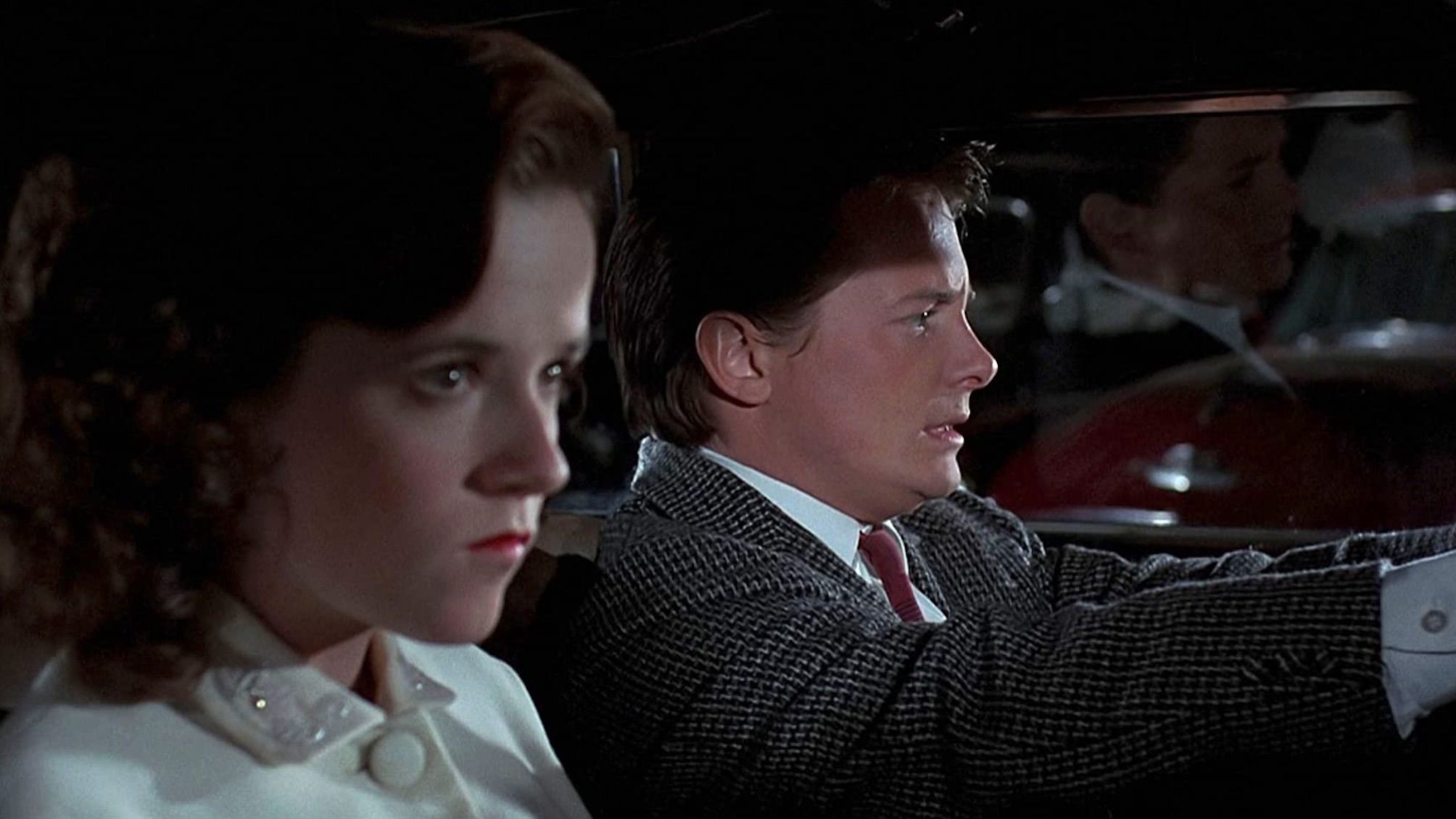
This film came out during major shifts in Hollywood – workers in the industry diversified, leading to more diverse stories. Essentially, Back to the Future was one step forward, two steps backward, regarding female representation on the screen. Yes, it was there, but it was pretty lackluster.
Biff & Women
On the opposite end of the spectrum, we have our antagonist Biff who is an example of an extreme misogynist and sexist. He repeatedly objectifies women, harasses multiple characters, and attempts to sexually assault Marty’s young mother. By the end of the film, he gets his comeuppance, but he is quite the menace throughout the film, not just to Marty but to women in general. This archetype is incredibly problematic, but this kind of antagonist was new at the time and was part of a new popular narrative. That is the narrative that the big, burly man, sexist man is the antagonist and not the person to look up to.
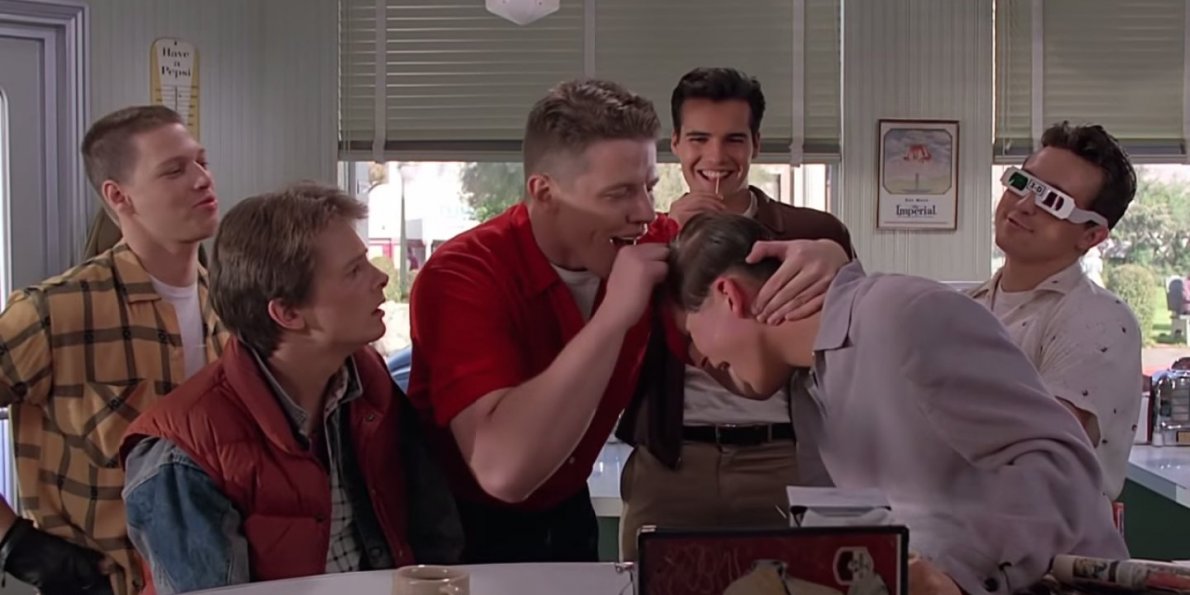
This popular new antagonist type came with the rise of “the nice guy,” the idea that the guy to look up to is, in fact, the polite nerd. Now, in extremely cishet terms, this idea of being a “nice guy” also became problematic later, with the idea that being nice means you are entitled to female affection — but at the time, this was a new and better narrative than the guy who gets the girls being “the bad boy” (e.g., the whole plot of “Grease”).
The Lasting Impact Of Back To The Future
Back to the Future has influenced a lot of media following its release. One of the greatest examples of that is the top-rated Adult Swim series, Rick and Morty. Originally, it was supposed to be called “Doc and Marty” and was going to be a series of short adventures based on the film. Instead, it became what it is today, a series about the various adventures between an eccentric and crazy genius scientist grandfather and his pretty average and basic grandson. Something about Marty and Morty’s normalcy paired with the chaotic energy of Rick and Doc is a formula that audiences keep coming back for more.
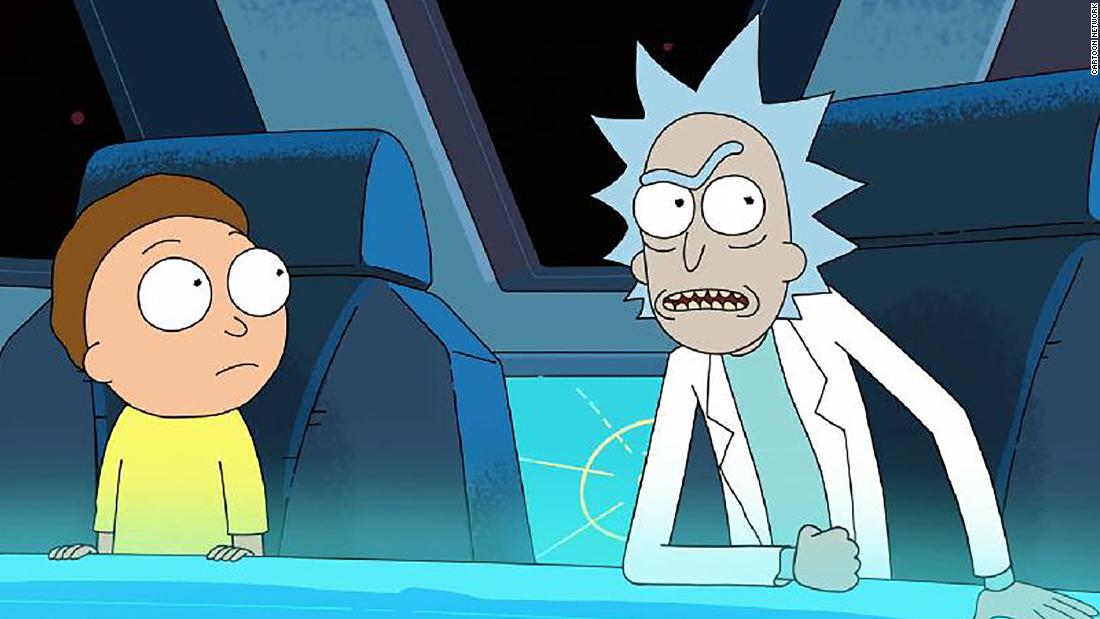
Additionally, what Back to the Future brought to the cinematic universe was the idea of inserting smaller relatable stories within a more extensive, action-packed narrative. Yes, the film is about time travel hijinx. Still, really, it is about Marty’s relationship with his parents — how he feels somewhat abandoned by his parents as they grapple with their struggles, how he looks to Doc as a father figure, and how meeting his parents as their young selves in the 50s truly humanizes them and their efforts in his mind. It is this, the core of the film being familial relationships, that genuinely entices. The average moviegoer wants to relate to a film’s characters and struggles. While they can’t relate to the science fiction aspect, they can to the themes of family and struggling to understand parents/children. Since Back to the Future, this insertion of everyday struggles has increased in commonality in the science fiction genre.
Going Forward With Back To The Future
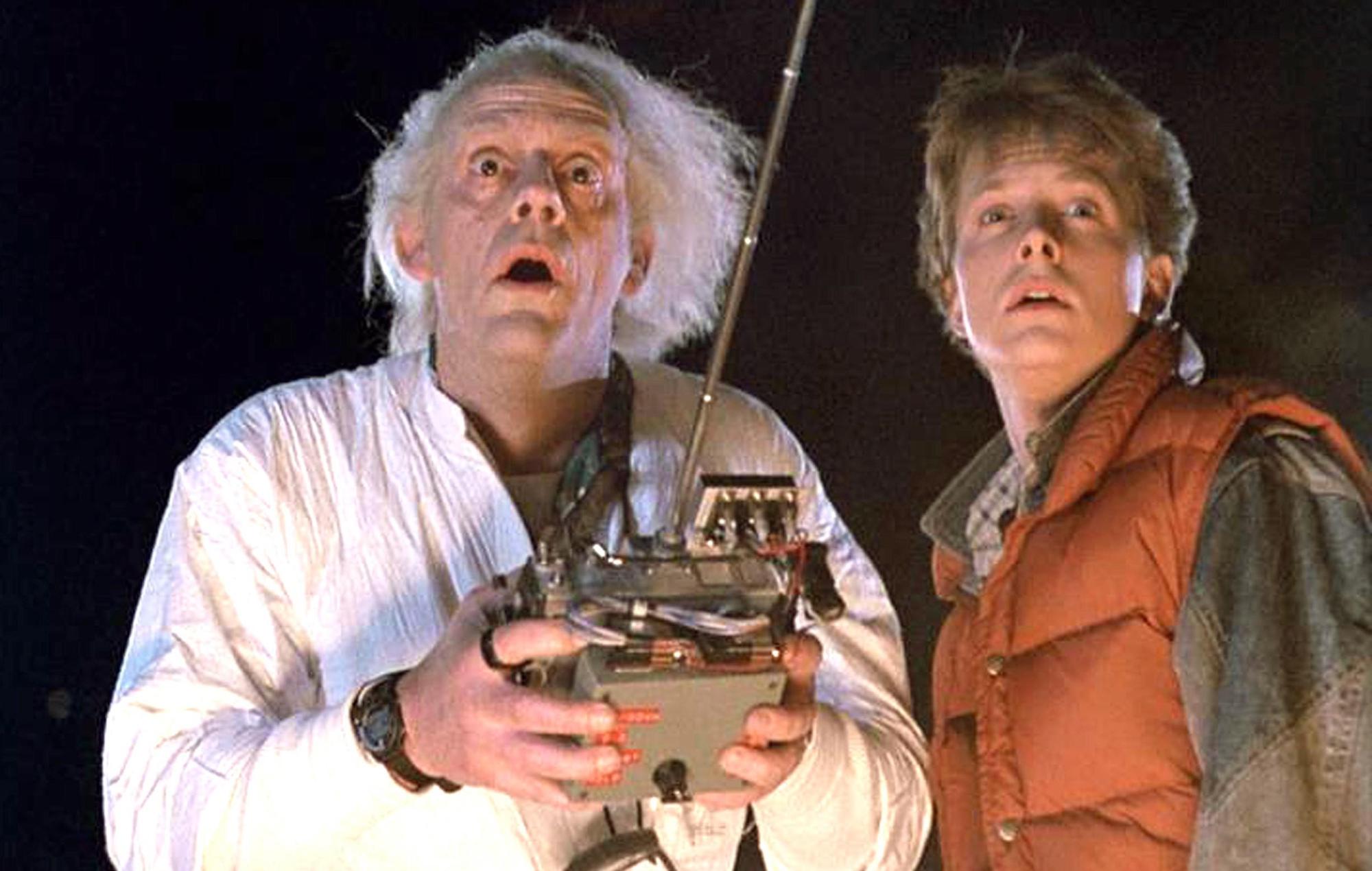
Back to the Future seems like it is going to stick around and continue to be more and more of a “cult classic.” A story of adventure, science fiction, love, and family, this film hits many marks, making it beloved and still popular to this day. Even just recently, the film has been in the news for various reasons. Porsche just released an advertisement for its new Taycan, which it claims to be its fastest charging electric car yet. The ad compares its speed and capabilities to the iconic DeLorean from Back to the Future. (( Porsche. “The Porsche Taycan X Back to the Future.” YouTube, YouTube, 21 Oct. 2021 )).
There is also a new Back to the Future musical currently running in London’s West End, featuring a dancing Doc and Marty and all of the chaos of the movie. (( Gilliam, Ryan. “Great Scott, Back to the Future: The Musical Has an Official Trailer.” Polygon, Polygon, 27 Sept. 2021 )). Back to the Future was a revolutionary production for its time, although it was in no way a perfect film. It has problems with representation in terms of today’s standards, for sure, but it arguably was a film taking steps in the right direction. The comfort and nostalgia of this film lasted to today, and most likely, as it is passed down to the newer generations, it will sustain into the future.
